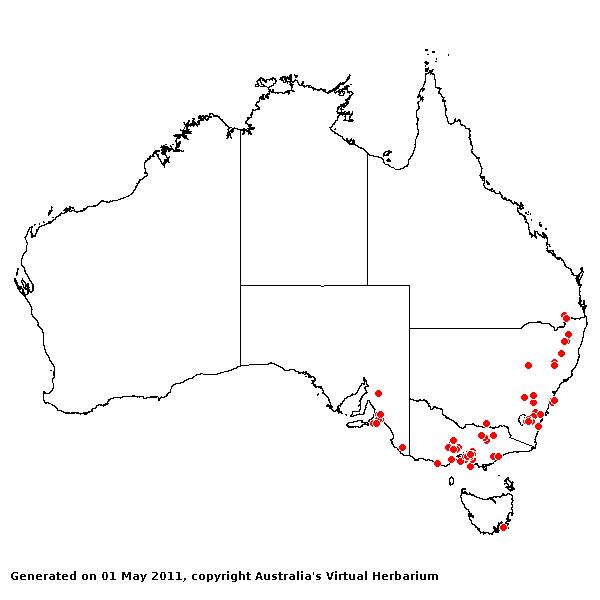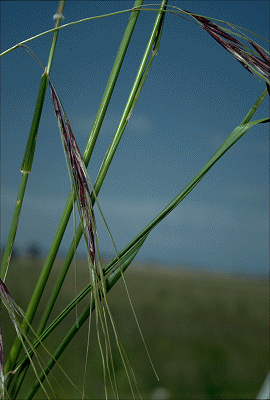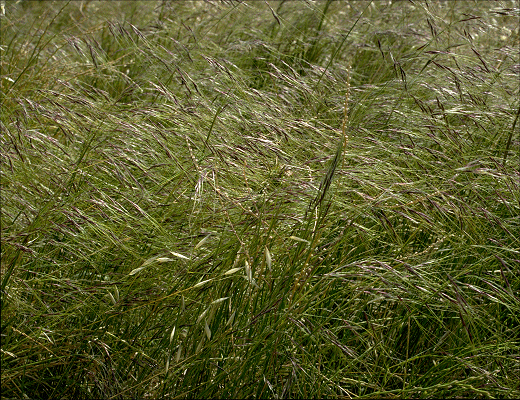Nassella neesiana* (Trinius & Ruprecht) M.E. Barkworth. Taxon 39: 611 (1990).
Classification. (GPWG 2001) : Subfamily Pooideae. Tribe Stipeae.
Basionym and/or Replacement Name: Stipa neesiana Trin. & Rupr., Sp. Gram. Stipac. 27–28 (1842); Stipa eminens Nees, Fl. Bras. Enum. Pl. 2(1): 374 (1829).
Type of Basionym or Protologue Information: HT: F. Sello s.n., de Schlechtendal, 1827, Brazilia meridionalis [Uruguay] (LE-TRIN; IT: US-557439 (ex LE-TRIN)).
Key references (books and floras): [2002] D.Sharp & B.K.Simon, AusGrass, Grasses of Australia, [2006] J.Jessop, G.R.M.Dashorst, F.M.James, Grasses of South Australia (108), [2008] S.W.L.Jacobs, R.D.B.Walley & D.J.B.Wheeler, Grasses of New South Wales (305), [2009] A.Wilson (ed.). Flora of Australia, Vol 44A. Poaceae 2 (67).
Illustrations: [2006] J.Jessop, G.R.M.Dashorst, F.M.James, Grasses of South Australia (109, Fig. 71as subsp. neesiana), [2008] S.W.L.Jacobs, R.D.B.Whalley & D.J.B.Wheeler, Grasses of New South Wales, 4th edn (305), [2009]. A.Wilson (ed.), Flora of Australia 44A: Poaceae 2 (63, Fig 9).
Habit. Perennial. Culms erect, 30–100 cm tall, 3–4 -noded. Mid-culm internodes glabrous. Lateral branches simple. Leaf-sheaths glabrous on surface or hairy. Ligule an eciliate membrane, 0.5–3 mm long, membranous, truncate or obtuse. Leaf-blades flat or convolute, 2–5.5 mm wide. Leaf-blade surface glabrous or indumented.
Inflorescence. Inflorescence compound, a panicle or a panicle. Panicle lanceolate, 5–30 cm long.
Spikelets. Spikelets pedicelled. Fertile spikelets 1-flowered, comprising 1 fertile floret(s), without rachilla extension, lanceolate, terete, 10–22 mm long.
Glumes. Glumes similar, thinner than fertile lemma. Lower glume lanceolate, membranous, without keels. Upper glume lanceolate, 10–22 mm long, membranous, without keels.
Florets. Fertile lemma 7–11 mm long, without keel, 5 -nerved. Lemma surface indumented. Lemma apex entire, awned, 1 -awned. Median (principal) awn 40–85 mm long overall, with a twisted column. Column 25–55 mm long. Palea without keels. Anthers 3.
Continental Distribution: Africa, Australasia, and South America.
Australian Distribution: South Australia, Queensland, New South Wales, Victoria.
South Australia: Southern Lofty, South-eastern. Queensland: Darling Downs. New South Wales: Central Coast, Northern Tablelands, Central Tablelands, Southern Tablelands. Victoria: Gippsland Plain, Midlands, Volcanic Plain.
Notes. Introduced from S. America and now spreading in the Central Coast, Northern Tablelands and Southern Tablelands subdivisions of New South Wales, and in the Melbourne, Beechworth, Tarnagulla, Maryborough and Warrnambool areas of Victoria.






